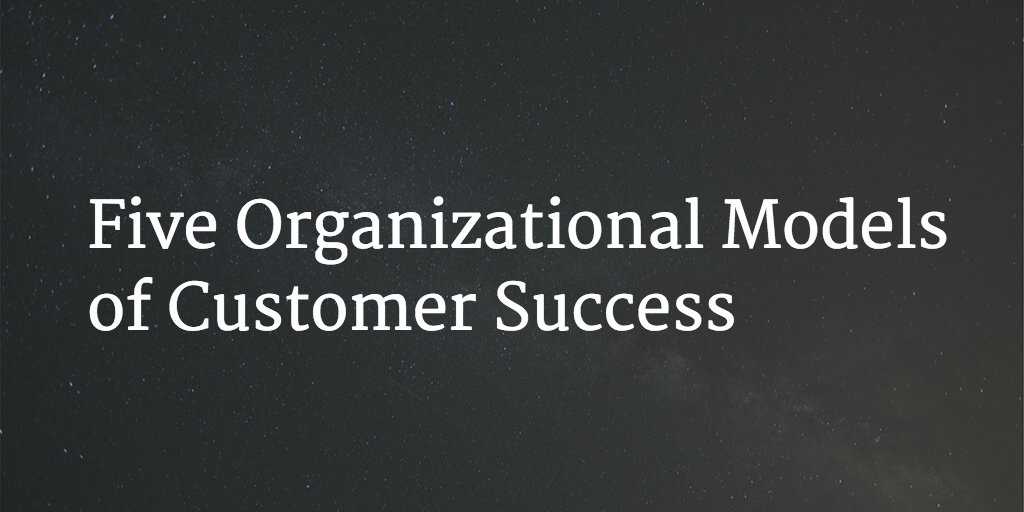The most common question I get from fellow CEOs, beyond why I own so much Pittsburgh Steelers-related paraphernalia, is how to structure Customer Success organizationally. Should it report to Sales? Should it report to Services? Can’t everyone just hold hands and drive Customer Success together?
Dan Steinman, Chief Customer Officer at Gainsight, spoke about the value in driving a Customer Success culture across the business, a point that was underscored by Todd Pearson, Zuora’s VP of Customer Success, in a companion article he wrote on the same topic. Both Dan and Todd agree that all eyes are on the CEO to be the driver of the movement who communicates the importance of customer success to the entire company.
Well now comes the hard part – Who will own Customer Success at your company? Some executives propose sharing the responsibility across multiple departments, but that’s just not going to work. Who is held responsible when things go wrong? Imagine that at your company everyone owns sales but no one is responsible for it. Customer Success requires a single owner, whose sole focus is on your customers and ensuring that they are getting real value from your products and services. This person needs to influence other departments to make the changes necessary to keep customers happy and engaged.
Now, since no one business is the same, we’ve put together a few slides to help other CEOs navigate different organizational models and understand the pros and cons associated with each. Where should Customer Success report? How does Customer Success align to other functions? We answer these questions by looking at five models that are common across most recurring revenue businesses.
http://www.slideshare.net/GainsightHQ/gainsight-csm-org-structures
- Firefighter CSM – Typically found in early-stage companies where Customer Success is responsible for support, renewals and other post-sales activities. The good news here is that CSM is the “one-stop shop” and can ensure a great client experience. The bad news is that this model is hard to scale and places more pressure on the team to find the right candidate for the role.
- Sales-Oriented CSM – Typically found in companies with a low level of product complexity and a competitive sales and renewals focus. In this model, Customer Success is aligned to revenue and is responsible for identifying up-sell. The challenge is that the focus is less on the customer, and can carry a negative “sales-y” perception amongst the customers.
- Service-Oriented CSM – Typically found in more mature companies with medium levels of product complexity. The pros are that Customer Success is aligned to customer needs as well as the rest of the service organization. The cons are less revenue alignment and an increase in touch points with the client.
- Integrated CSM – Typically found in companies with moderate levels of product complexity and are in hyper-growth mode. In this model, the Chief Customer Officer “owns” existing customers and keeps the sales team focused on closing new business. It requires a very versatile CCO and success will depend on the maturity of the organization.
- Partnership CSM – Typically found in companies with very complex products and a competitive sales and renewals organization. The good news is that Customer Success can be very customer-focused while maintaining alignment with renewals sales. The danger is that some levels of effort duplication are inevitable. Also, quantifying ROI becomes difficult in this model.
Like any other department, Customer Success will shift strategies as your business needs change and your product offering becomes more complex.
How does your business structure Customer Success organizationally? Did you see your model represented above or do you have another approach to add to the list? We’d love to hear what is and isn’t working for you.

